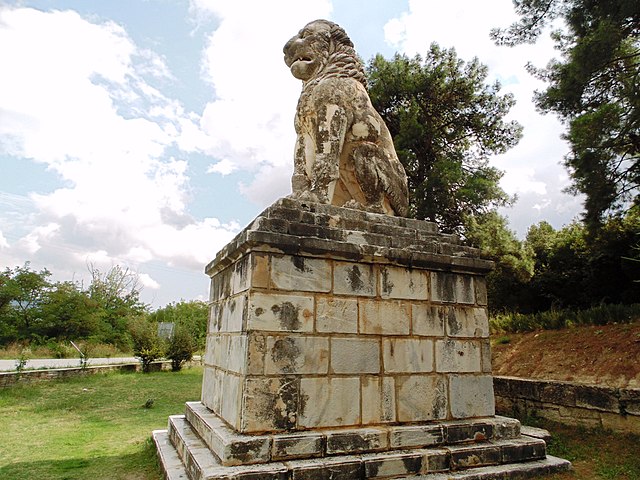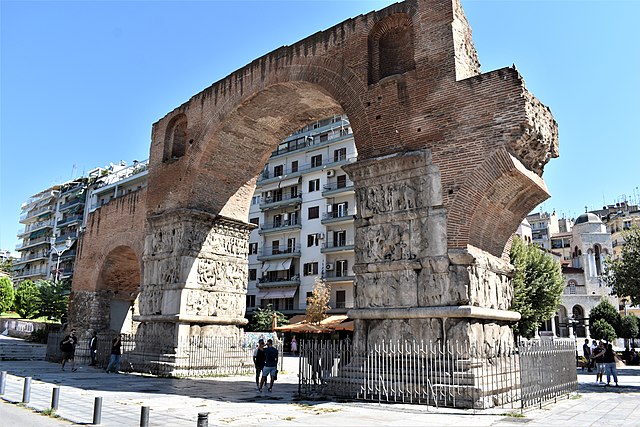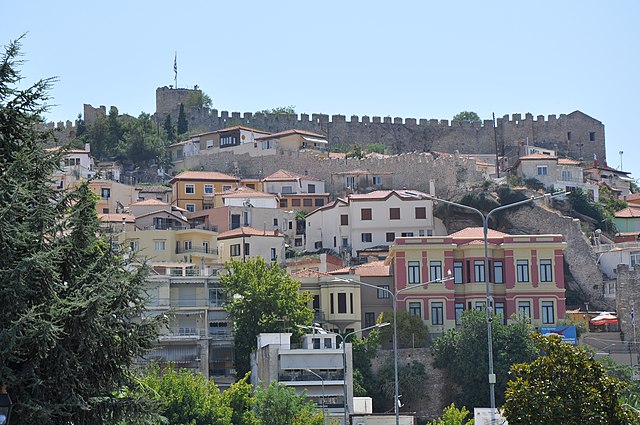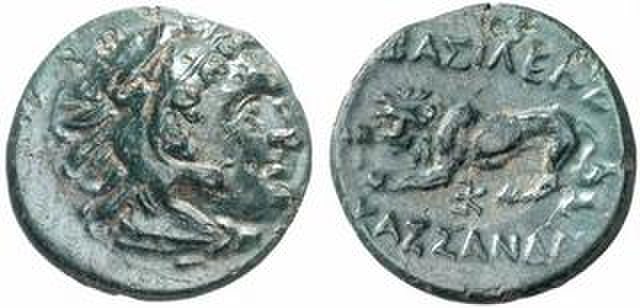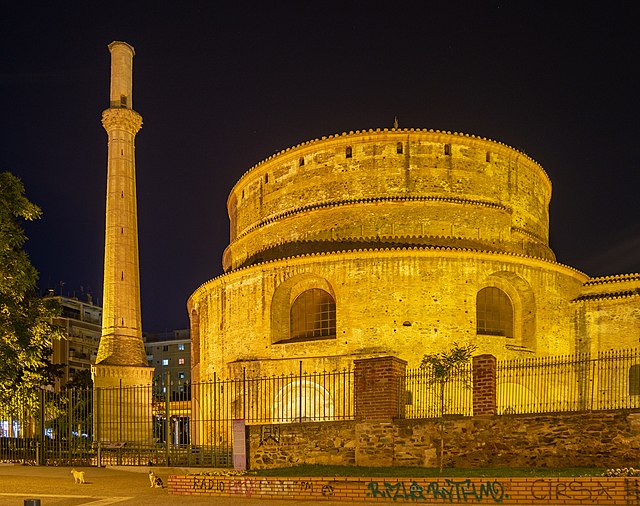Macedonia is a geographic and former administrative region of Greece, in the southern Balkans. Macedonia is the largest and second-most-populous geographic region in Greece, with a population of 2.36 million. It is highly mountainous, with major urban centres such as Thessaloniki and Kavala being concentrated on its southern coastline. Together with Thrace, along with Thessaly and Epirus occasionally, it is part of Northern Greece. Greek Macedonia encompasses entirely the southern part of the wider region of Macedonia, making up 51% of the total area of that region. Additionally, it widely constitutes Greece's borders with three countries: Albania to the northwest, North Macedonia to the north, and Bulgaria to the northeast.
The expansion of the ancient Macedonian Kingdom up to the death of Phillip II
The Lion of Amphipolis; erected in 4th BC in honour of Laomedon of Mytilene, general of Alexander the Great
View of the Roman-era Arch of Galerius in Thessaloniki, capital of Roman Macedonia
View of the Byzantine fortress in the old town of Kavala.
Thessaloniki, also known as Thessalonica, Saloniki, Salonika, or Salonica, is the second-largest city in Greece, with slightly over one million inhabitants in its metropolitan area, and the capital of the geographic region of Macedonia, the administrative region of Central Macedonia and the Decentralized Administration of Macedonia and Thrace. It is also known in Greek as "η Συμπρωτεύουσα", literally "the co-capital", a reference to its historical status as the Συμβασιλεύουσα or "co-reigning" city of the Byzantine Empire alongside Constantinople.
Ancient coin depicting Cassander, son of Antipater, and founder of the city of Thessaloniki
The fourth-century AD Rotunda of Galerius, one of several Roman monuments in the city and a UNESCO World Heritage Site
Section of the Walls of Thessaloniki
Church of the Acheiropoietos (5th century) at the city's centre


